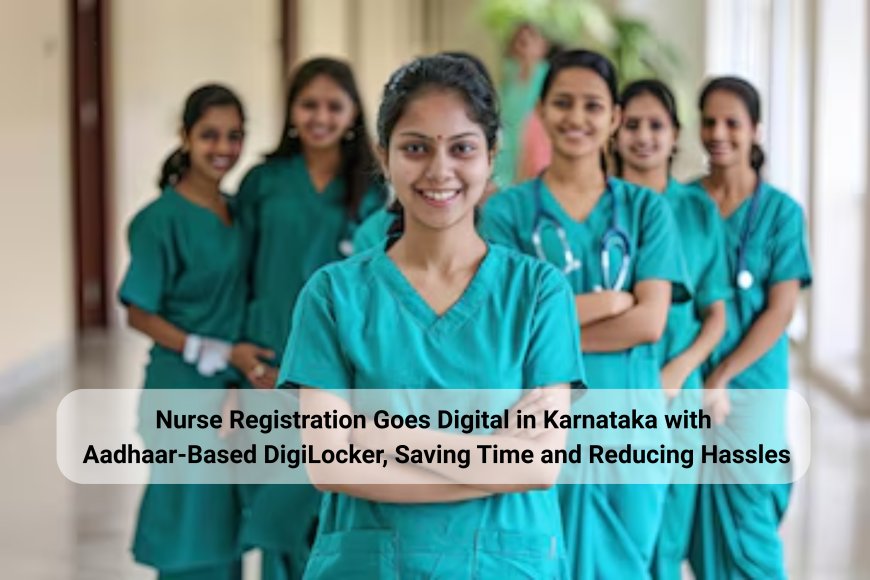Nurse Registration Goes Digital in Karnataka with Aadhaar-Based DigiLocker, Saving Time and Reducing Hassles
Karnataka introduces Aadhaar-linked DigiLocker tech for nurse registration, easing access, preventing forgery, and eliminating travel hassles for candidates across the state.

For the first time in India, Karnataka introduced a specific DigiLocker-based technology to streamline the nurse registration process. Chief Minister Siddaramaiah will officially launch the new system, which was developed by the Karnataka State Nursing Council, on July 15.
Medical Education Minister Sharanaprakash Patil explained that the technology leverages Aadhaar-based e-KYC to provide registration certificates digitally. It was created in collaboration with the UIDAI, C-eG, Rajiv Gandhi University of Health Sciences (RGUHS), and the Karnataka State Nursing Examination Board.
Previously, nurses had to go to Bengaluru from across Karnataka, and even outside the state, to register. This involved spending money on transportation, food, and accommodation, usually while waiting in long lines. The process was especially hard for women, particularly pregnant women and new mothers. The new system tries to reduce all of these inconveniences.
The Nursing Council can now access personal information such as nurses' names, photos, and addresses directly using Aadhaar e-KYC. It also prevents document fraud. The Council can fetch SSLC, PUC, and Aadhaar documents from official databases using DigiLocker-Requester technology. Examination results from RGUHS and the Nursing Board will also be accessible without manual intervention.
After the verification is completed, the DigiLocker-Issuer system will transmit the registration certificates directly to the nurses' DigiLocker accounts.
This action represents a significant step forward in digitizing the healthcare sector and making life easier for nursing workers in Karnataka. It not only saves time and money, but it also improves the overall security and transparency of the registration process.
Information referenced in this article is from The Hindu







